1. Mario Savino
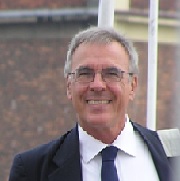 Prof. Mario Savino is a professor of Electrical and Electronic Measurement, Electrical and Information Engineering Department at Polytechnic of Bari and Honorary Chairperson of IMEKO TC-4. In 2003 he obtained the „Distinguished Service Award” by the same confederation and in 2011 was selected as the recipient of the IEEE Instrumentation and Measurement Society Career Excellence Award. He is author or co-author of more than two hundred papers published in international scientific reviews or proceedings and has been invited speaker at numerous International Conferences.
Prof. Mario Savino is a professor of Electrical and Electronic Measurement, Electrical and Information Engineering Department at Polytechnic of Bari and Honorary Chairperson of IMEKO TC-4. In 2003 he obtained the „Distinguished Service Award” by the same confederation and in 2011 was selected as the recipient of the IEEE Instrumentation and Measurement Society Career Excellence Award. He is author or co-author of more than two hundred papers published in international scientific reviews or proceedings and has been invited speaker at numerous International Conferences.
History of IMEKO TC4 – Second Part
This paper, (Prof. Janusz Mindykowski co-author), is a logical and complementary carrying on of the previous history of IMEKO Technical Committee on ‘‘Measurement of Electrical Quantities” (TC4) from 1979 to 2002, written by Mario Savino and presented during the TC4 Symposia in Kosice, Slovak Republic, 8-10 September 2010 and in Natal, Brazil, 27–30, September 2011. After a brief summary of the beginning of the IMEKO TC4 and of its genesis, the paper deals with the scientific and organizational progress in IMEKO TC4 from 2003 to 2016. The paper considers all the TC4 Symposia and World Congresses organized in those years, with a glance at the historical events in the world. Particularly, it was important the decision of several new countries to join the European Community. This choice influenced the development and promoted new trends in measurement of electrical quantities.
2. Dragana Popovic Renella

Dr. Dragana Popovic Renella is a co-founder and COO of SENIS AG, Switzerland. She received a Master of Science degree in Electrical Engineering from ETH Zurich, Switzerland and a PhD in Technology Management from the University of Novi Sad, Serbia. She
attended executive courses in Marketing Management at SDA Bocconi, Milan, Italy. Prior to co-founding SENIS, Dragana worked for ETH Zurich, Sentron AG and Credit Suisse. Dragana is a Swiss member of the technical committee TC4 of IMEKO.
Supporting World Development through Advanced Magnetic Measurement Applications in Industry and Physics Laboratories
World Development is a process of improving the quality of human life. This includes, among other things, improving reliability and increasing efficiency of electrical machines; vehicle safety in the automotive industry; more accurate medical equipment; improved research infrastructures. The development and operation of these and many other machines is supported in a way or another also by advanced magnetic measurement applications.
Magnetic measurement instruments are typically applied for quality control and monitoring of permanent magnets, electro magnets and magnet systems (generators, motors); for the development of magnet systems and process control; for magnetic field mapping and in general for magnetic field measurement applications in production lines and in laboratories. Driven by „Necessity is the mother of invention” our company SENIS, specialized in advanced magnetic and current measurement instrumentation, is supporting the industry and physics laboratories that contribute to the world development process both through novel measurement principles and equipment as well as through new applications of known measurement techniques. In this sense, I will present several applications of advanced magnetic field measurement that support the world development.
Condition monitoring of electrical machines: Condition monitoring techniques are applied in order to identify a change in operation of an electrical machine, which is indicative of developing a failure of the machine. The use of condition monitoring allows maintenance to be scheduled, or other actions to be taken to prevent failure in electrical machines and avoid its consequences. There is a requirement to measure the magnetic flux density in or around stators and rotors of electrical machines, e.g. electrical generators or motors. This can be done by a Hall-effect magnetic field transducer. Hall-effect devices have the advantage of being able to measure both DC and AC magnetic fields in a broad range, and can be made in extremely small sizes.
Magnetic Field Mapping of undulators, quadrupoles and sixtupoles at light sources, radiation centers, synchrotron centers etc.: The arrays of magnets in the undulators for light sources, as for instance that atSwissFEL (Switzerland’s X-ray free-electron laser) has to be precisely tested and adjusted. An ultrathin 3-axis Hall probe is used to measure the magnetic field profile along or parallel to the undulator axis. Another example is the use of SENIS Hall probes for monitoring of beam control magnets e.g. in the Paul Scherrer Institute’s proton therapy system for patient therapy.
Quality control of permanent magnets: Most of modern magnetic position and angle sensors consist of a combination of a permanent magnet and a magnetic field sensor. Billions of such sensors are built in automotive, industrial and consumer products each year. The characteristics of permanent magnets for such applications must be carefully controlled. The control of the magnets often includes measurement of the magnetic field over an area or volume of interest near the magnet, which is usually performed by a Magnetic Field Mapper.
AMR-based Nanoteslameter for active cancelation of environmental magnetic fields and for measuring stray magnetic fields of electrical machines: Usually for the measurement of small magnetic fields flux gate sensors are applied. However, fluxgates can be very large in their dimensions. Some applications require the combination of very high-spatial resolution, high DC magnetic resolution and very well defined position of the sensitive area during the measurement.
The above applications illustrate how SENIS 3D Hall- and AMR-based magnetometers and mappers might support the world development. The goal is to exchange our know-how and experience to support this process of development.
3. Pedro Silva Girao
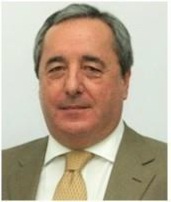 Prof. Pedro Silva Girão (M’00–SM’01) is a Full Professor of the Department of Electrical and Computer Engineering, Instituto Superior Técnico, University of Lisbon, and a Senior Researcher, the Head of the Instrumentation and Measurements Group, and the Coordinator of the Basic Sciences and Enabling Technologies of the Instituto de Telecomunicações (IT). His main research interests include instrumentation, transducers, measurement techniques, and digital data processing, particularly for biomedical and environmental applications. Metrology, quality, and electromagnetic compatibility are also areas of regular activity. Dr. Girão is a Senior Member of the IEEE, Distinguished Lecturer of IEEE/I&MS, and a regular reviewer of IEEE Trans. on Instrumentation and Measurement, Trans. On Biomedical Circuits and Systems, Sensors Journal, and Signal Processing Letters and member of the technical program committee of IEEE IMTC, SPICES, SSD, CIVEMSA, Sensors and MeMeA (co-chair in 2014) and maintains a strong relationship with IMEKO, being a member of the Advisory Board and Honorary Chair of TC-19.
Prof. Pedro Silva Girão (M’00–SM’01) is a Full Professor of the Department of Electrical and Computer Engineering, Instituto Superior Técnico, University of Lisbon, and a Senior Researcher, the Head of the Instrumentation and Measurements Group, and the Coordinator of the Basic Sciences and Enabling Technologies of the Instituto de Telecomunicações (IT). His main research interests include instrumentation, transducers, measurement techniques, and digital data processing, particularly for biomedical and environmental applications. Metrology, quality, and electromagnetic compatibility are also areas of regular activity. Dr. Girão is a Senior Member of the IEEE, Distinguished Lecturer of IEEE/I&MS, and a regular reviewer of IEEE Trans. on Instrumentation and Measurement, Trans. On Biomedical Circuits and Systems, Sensors Journal, and Signal Processing Letters and member of the technical program committee of IEEE IMTC, SPICES, SSD, CIVEMSA, Sensors and MeMeA (co-chair in 2014) and maintains a strong relationship with IMEKO, being a member of the Advisory Board and Honorary Chair of TC-19.
Wireless Sensor Networks
Wireless sensor networks are, as the name indicates, wireless networks whose nodes are devices with sensing capabilities usually materialized by what is commonly called smart sensors. This type of distributed measuring system, which is still at an early stage of development, finds application in an increasing number of fields: environmental monitoring, habitat monitoring, health monitoring of civil infrastructures, military surveillance, precision or smart agriculture, process monitoring, stock control, just to mention a few. It is a multidisciplinary subject involving in particular sensors, electronics, signal processing, programming and telecommunications.
In the talk, and after introducing and framing wireless sensor networks, the different aspects involved in the design and implementation of such type of measuring systems are presented and discussed. Emphasis will be placed on the state-of-the-art and principal difficulties still to overcome in the different components of the network. To open the discussion on the subject, the talk will end with the presentation of examples taken from the author’s experience.
4. Janusz Mindykowski
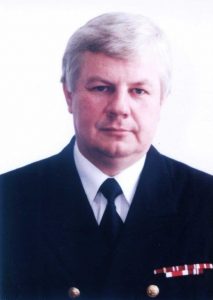 Professor Janusz Mindykowski is currently Head of Marine Electrical Power Engineering Department (since 1994), Gdynia Maritime University and since 2002 a full professor of this University. A key point of his research is focused on power quality problems. He has published about 260 papers (more than 40 indexed in the Web of Science base). Janusz Mindykowski is a Fellow Member (1994-2013) of the Institution of Engineering and Technology (IET, before IEE), a Senior Member (2013) of the Institution of Electrical and Electronic Engineers (IEEE), a Scientific Secretary (2006-2009), a Deputy Chairman (2009-2012) and a Chairman (2012-2015) of IMEKO Technical Committee on Measurement of Electrical Quantities (TC4). He is also the Member of the Committee for Metrology and Instrumentation, Polish Academy of Sciences (2003-2015), and Honorary Professor of Shanghai Maritime University (2006).
Professor Janusz Mindykowski is currently Head of Marine Electrical Power Engineering Department (since 1994), Gdynia Maritime University and since 2002 a full professor of this University. A key point of his research is focused on power quality problems. He has published about 260 papers (more than 40 indexed in the Web of Science base). Janusz Mindykowski is a Fellow Member (1994-2013) of the Institution of Engineering and Technology (IET, before IEE), a Senior Member (2013) of the Institution of Electrical and Electronic Engineers (IEEE), a Scientific Secretary (2006-2009), a Deputy Chairman (2009-2012) and a Chairman (2012-2015) of IMEKO Technical Committee on Measurement of Electrical Quantities (TC4). He is also the Member of the Committee for Metrology and Instrumentation, Polish Academy of Sciences (2003-2015), and Honorary Professor of Shanghai Maritime University (2006).
Contemporary Challenges to Power Quality in Ships Systems – Metrological Perspective
This paper deals with some contemporary challenges to power quality in ship systems, observed from metrological perspective. Two basic aspects, assessment of power quality and improvement of safety of shipping are taken into account. In the process of power quality assessment, the existing ambiguities and gaps are shortly analyzed and discussed, with underling the related metrological aspects. The ways of the safety improving related to power quality on ships are described and analyzed into two layers: technological solutions and staff competences, with appointing the metrological aspects of ship system design, development and exploitation. Expectations and challenges for the future based on developments of both, legal and professional aspects are focused on the key question: how to reduce a risk of ship accidents, or more widely, how to improve a safety of shipping. Concluding remarks are formulated in the wake of a role of measurement and related instrumentation in realization of analyzed challenges.
5. Octavian Postolache
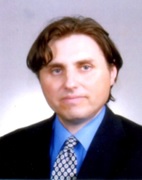 Dr. Octavian Adrian Postolache (M’99, SM’2006) graduated in Electrical Engineering at the “Gh. Asachi” Technical University of Iasi, Romania, in 1992 and he received the PhD degree in 1999 from the same university, and university habilitation in 2016 from Instituto Superior Tecnico, Universidade de Lisboa, Portugal. He is currently senior researcher at Instituto de Telecomunicações and Aux. Prof. InstitutoUniversitario de Lisboa/ ISCTE-IUL Lisbon. His fields of interests are smart sensors for biomedical and environmental applications, pervasive sensing and computing, advanced signal processing and computational intelligence for distributed instrumentation systems. He was principal researcher of different projects including EHR-Physio regarding the implementation of Electronic Health Records for Physiotherapy and he is currently principal researcher of TailorPhy project Smart Sensors and Tailored Environments for Physiotherapy.
Dr. Octavian Adrian Postolache (M’99, SM’2006) graduated in Electrical Engineering at the “Gh. Asachi” Technical University of Iasi, Romania, in 1992 and he received the PhD degree in 1999 from the same university, and university habilitation in 2016 from Instituto Superior Tecnico, Universidade de Lisboa, Portugal. He is currently senior researcher at Instituto de Telecomunicações and Aux. Prof. InstitutoUniversitario de Lisboa/ ISCTE-IUL Lisbon. His fields of interests are smart sensors for biomedical and environmental applications, pervasive sensing and computing, advanced signal processing and computational intelligence for distributed instrumentation systems. He was principal researcher of different projects including EHR-Physio regarding the implementation of Electronic Health Records for Physiotherapy and he is currently principal researcher of TailorPhy project Smart Sensors and Tailored Environments for Physiotherapy.
Dr. Postolache is author and co-author of 9 patents, 4 books, 16 book chapters, 67 papers in international journals with peer review, more than 220 papers in proceedings of international conferences. He is IEEE Senior Member I&M Society, Distinguished Lecturer of IEEE IMS, chair of IEEE I&MSTC-13 Wireless and Telecommunications in Measurements, member of IEEE I&M TC-17, IEEE I&M TC-18, IEEE I&MS TC-25, IEEE EMBS Portugal Chapter and chair of IEEE IMS Portugal Chapter. He is Associate Editor of IEEE Sensors Journal, and IEEE Transaction on Instrumentation and Measurements, he was general chair of IEEE MeMeA 2014, and TPC chair of ICST 2014, Liverpool and ICST 2015 in Auckland. He received IEEE best reviewer and the best associate editor in 2011 and 2013 and other awards related to his research activity in the field of smart sensing.
Internet of Things for Healthcare: Smart Physiotherapy
Internet of Things (IoT) and Cloud Computing are very promissory technologies regarding patient monitoring and information management especially for particular case of physical rehabilitation.
The presentation will focus on IoT enabled physiotherapy equipment and appropriate embedded and high level software associated with the acquision of relevant data from the patients under rehabilitation process based on the interaction between the patients with real objects and virtual objects. The IoT flowing data can help the physiotherapist to perform objective evaluation of patient progress, and later to perform right choice of rehabilitation training that may improve the patient rehabilitation outcomes.
Solutions expressed by tailored environments for serious games , augmented reality including smart equipment and natural user interface used to extract information about patient balance and movements characteristics are discussed. Special attention will be granted to virtual reality serious games that used Leap motion and Kinect V2 as natural user interface but also are discussed the possibility to interact with virtual serious game world using daily used smart physical rehabilitation equipment, such as smart walkers and crutches, wearable motor activity monitors with EMG, force and acceleration measurement capabilities. Signal processing techniques applied for motor activity signals but also advanced data analysis specific for IoT and IoE architectures such big data analysis and the advantages of this kind of approaches will be presented.
6. Fabrizio Clemente
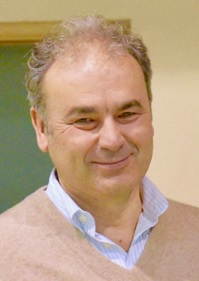 Fabrizio Clemente, MS electronic engineering, PhD biomedical engineering
Fabrizio Clemente, MS electronic engineering, PhD biomedical engineering
Senior Researcher at the Institute of Biostructures Bioimaging, National Research Council of Italy, Rome.
Professor of Quality Control and Health Management at University „Tor Vergata”, Rome.
Member of Health Technology Assessment Group (HTA) of Santobono Pausilipon Pediatric Hospital, Naples.
Current research lines are:
– study of models and indicators for the qualification of health services,
– qualification of medical devices,
– technical standards,
– medical and clinical applications of additive manufacturing techniques,
– numerical analysis of the neuro rehabilitation signals,
– characterization of biological tissues by means of electrical impedance spectroscopy measurements,
– virtual instrumentation development.
Quality measurements in health systems
In recent decades the term quality has been introduced in to the common language as an essential part of health management. As matter of fact it is difficult to give a concise, meaningful, and generally applicable definition of quality in health care. As in all sectors the use of suitable quality metrics is crucial. Thus the estimation of useful indicators requires a phase of analysis in which statistical techniques must be deployed. Quality indicators are usually derived from clinical data sets collected in the hospital information systems (HIS) or in the department databases, often for different scopes with respect to quality evaluation and control. This key note aims to introduce concepts of quality in health systems and its measure. Some applicative examples will be reported.
